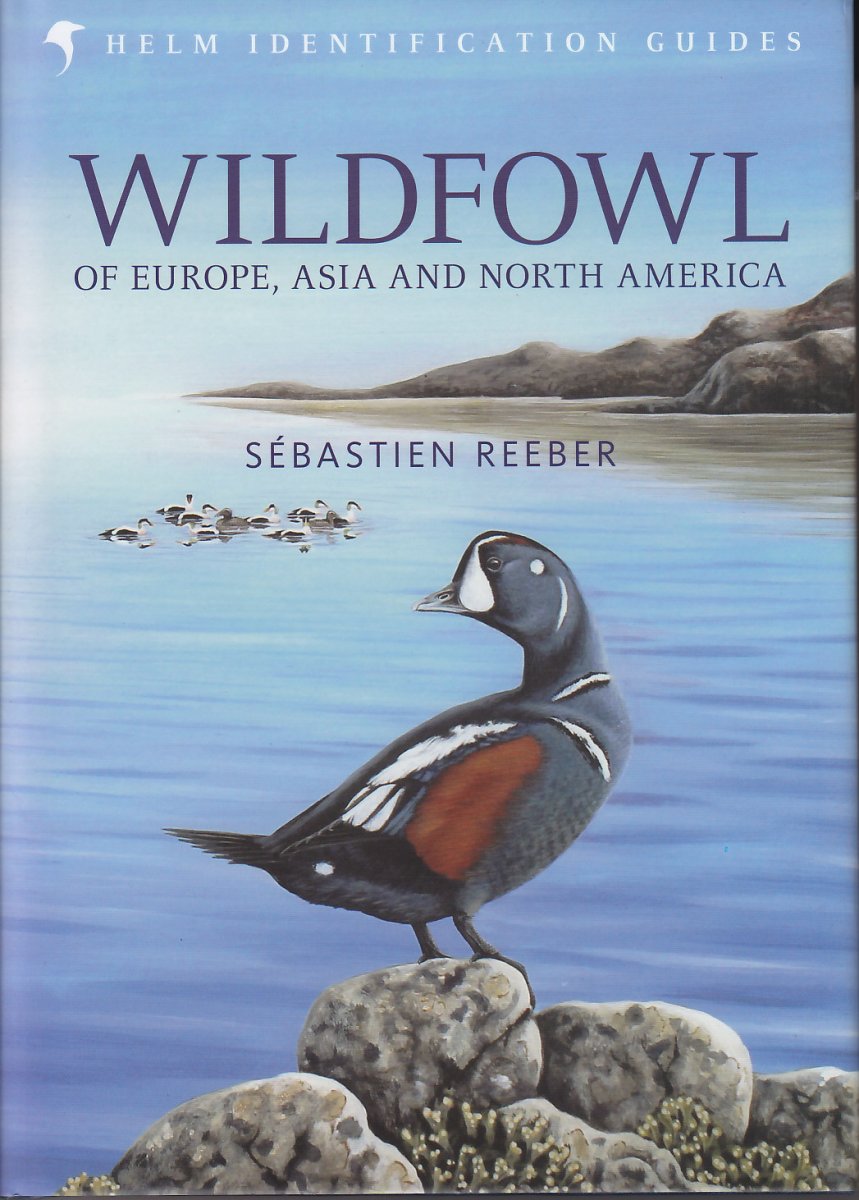
Publisher: Christopher Helm, London
Publication Year: 2015
Binding: 2
Page Count: 656
ISBN Number: 978-1-47291-234-3
Price: £35.00
Helm Identification Guide: Wildfowl of Europe, Asia and North America
The latest in the well-regarded Helm series covers ducks, geese and swans over the whole northern hemisphere; a necessity with a group of birds known for their long-distance movements and tendency towards vagrancy. The book follows the familiar pattern of painted plates showing all ages, sexes, plumages and races/subspecies, a brief description and map; followed by a much more exhaustive section covering each species and illustrated with many photographs.
I always find myself irresistibly drawn to these guides, but also have to ask what their purpose is: they are too large and geographically wide-ranging to be used in the field and, for many of us, they contain drifts of species we may never see. They are a superb source of reference material however and, if you have the shelf-space and enough in your wallet, the series builds into a fantastic resource. Others collect them for more aesthetic reasons. With very limited shelf space (and budget!), I have to pick and choose which ones I buy and, considering that an earlier Helm guide has already covered this group and there are numerous other sources of information on waterfowl, should I buy this one?
There is a lot to like about this book. It up-dates all previous works, the species treatments are truly exhaustive and the accompanying photos are numerous, high-quality and illustrate key features and variations. The plates (painted by the author) are aesthetically pleasing and benefits massively from the inclusion of a thorough treatment of hybrids, mystery creatures that surely all birders will have encountered when watching water birds. The book may well be worth getting for this alone.
I do have a quibble with those illustrations. They are good, but I can’t help noticing that the relative proportions of the head to body, position of eyes and shape of head and bill seems to vary from individual to individual. Reeber is trying to add movement and subtle variations in posture and look to the birds, but my feeling is that great attention has been paid to the subtle patterns and differences to the detriment, sometimes, of the overall sizes and proportions. Maybe I’m ultra-critical but the more I look the more examples I find. I’m still not certain whether I will get this book but I’m wavering towards getting it as, despite the minor irritation with the paintings, it is very good indeed.
Book reviewed by Su Gough
Buy this book




Share this page